 W
WThe Swiss Air Force is the air component of the Swiss Armed Forces, established on 31 July 1914 as part of the army and in October 1936 as an independent service.
 W
WAir14, also named 100 years Swiss Air Force was an international air show held by the Swiss Air Force in late August and early September 2014 at Payerne Air Base, Switzerland. It claimed to be the biggest airshow in Europe of 2014.
 W
WThe Berufsfliegerkorps (BFK) are the professional pilots of the Swiss Air Force.
 W
WThe Federal Office of Civil Aviation is the Swiss civil aviation agency, a division of the Federal Department of Environment, Transport, Energy and Communications. Its head office is in Bern, and it has an office at Zurich Airport.
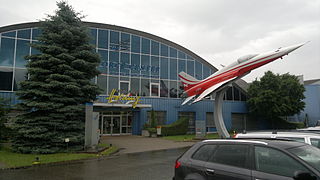 W
WThe Flieger Flab Museum is located in the Canton of Zurich in Dübendorf on the grounds of Dübendorf Air Base. In the museum, 40 airplanes and helicopters are displayed, with the collection divided into distinct eras: pioneers and World War I, the 1930s, World War II and the postwar period, the beginning of the jet age, the development of jet fighters, the Cold War, and arms reduction.
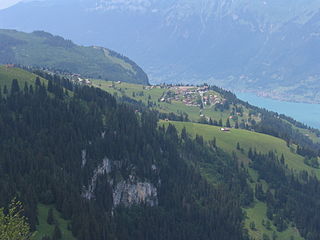 W
WAxalp is a high alpine pasture in the Bernese Oberland, on the northern slope of Axalphorn, overlooking Lake Brienz, today part of Brienz municipality.
 W
WFliegerstaffel 10 was a Swiss Air Force unit consisting of professional military pilots, belonging to the Überwachungsgeschwader. Their home base at the dissolution was the Military Airfield at Buochs, where ist was equipped with Mirage IIIRS. Fliegerstaffel 10 carried as their coat of arms the AMIR badge. This badge shows on a white ground a falcon head drawn with black lines, the neck of which is filled with blue color. The beak rises above the round badge, above the head of the falcon is a number 10 in red. Except for the number 10, the badge is identical to the AMIR badge of the Fliegerstaffel 3 and the Fliegerstaffel 4.
 W
WFliegerstaffel 13 of the Swiss Air Force was equipped with Northrop F-5 flown by militia pilots when disbanded in 2000. Their home base at the dissolution was Payerne Air Base. Fliegerstaffel 13 wore a shield-shaped insignia with a blue outer edge, showing an eagle with wings spread out and open claws ready to capture its prey, against a white background, with the red number 13 in front of the upper wing. The old emblem was round with an orange background and black border. It showed the stylized side view of a black wasp looking in the direction of the viewer; over its head was the number 13.
 W
WFliegerstaffel 21 was a Swiss Air Force squadron equipped with Hawker Hunter aircraft at the dissolution in 1994. Their home base was at the Raron Military Airfield. As a coat of arms, Fliegerstaffel 21 carried a white beaver, firing two guns while riding a red shark. On the shark is the black digit 21.
 W
WThe Fliegerstaffel 24 fighter squadron 24 of the Swiss Air Force was a former standalone squadron, which is now the ECM (German:EKF) part of the Zielflugstaffel 12. It is a militia squadron and belongs to the airfield command 7. Its home base is the Militärflugplatz Emmen. The Fliegerstaffel 24 carries as coat of arms an eagle in front of a light blue background, holding a lightning bolt in the right claw, in the background is a red-orange number 24 and above the coat of arms is a red-orange area with the black writing "Fliegerstaffel".
 W
WFLORAKO is a Swiss radar system for military and civil aviation. The acronym stands for FLORIDA radar replacement air radar system capable communication system in the initial phase of the project meant the name FLORES RALUS KOMSYS and emerged from the project name of the sub-systems. There are four surface to air missile tubes located on the site.
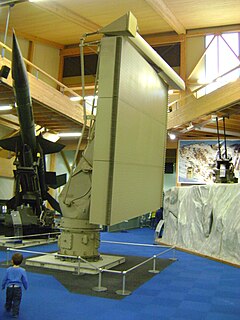 W
WThe FLORIDA Airspace Monitoring And Management System was an airspace monitoring and management system of the Swiss Air Force. It was built by Hughes Aircraft Company. It is located in Fullerton, California.
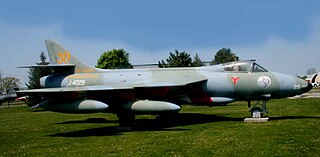 W
WThe Hawker Hunter had a very long career in Swiss Air Force from the late 1950s until they were retired in 1994. The Swiss Air Force operated 160 aircraft, both new and second-hand. The Hunter was upgraded several times and was used mainly as an attack aircraft by militia squadrons in the last decades of its service life. The retired aircraft had a ready market as a warbird and for use in target facilities operations.
 W
WThe LGR-1 was used by Swiss Air Force from 1948 until 1955 for positioning the planned radar air surveillance system. It is now in the Flieger-Flab-Museum at Dübendorf.
 W
WLufttransport Staffel 3 is a transport squadron of the Swiss Air Force. The unit is part of the Berufsfliegerkorps and is part of the Airtransportgeschwader 3 together with the Lufttransport Staffel 4, Which on its part belongs to Flugplatzkommando 2 at Alpnach Air Base. The home base of the Lufttransport Staffel 3 is Dübendorf Air Base. The squadron carries as coat of arms a red number 3 whose lower end transitions into a black line and finally forms the contour of a helicopter in flight, in front of a white mountain, blue sky and gray ground. A former Lufttransport Staffel 3 badge was round with a blue background down with two white mountain peaks to be seen, also with white circle who indicated radius of the rotor and the radius of the tailrotor. A white line formed the number 3 with the rotor and the bow of the red helicopter hull.
 W
WLufttransport Staffel 4 is a transport squadron of the Swiss Air Force. The squadron forms part of the Berufsfliegerkorps but hosts also militia pilots. Together with Lufttransport Staffel 3 it is subordinated to Lufttransportgeschwader 3, Which for its part belongs to the airfield command 2 at the Alpnach Air Base. The home base of the Lufttransport Staffel 4 is Dübendorf Air Base. The Lufttransport Staffel 4 carries a white numeral 4 as coat of arms, stylized to form the trunk of a helicopter against a blue background.
 W
WThe Lufttransport Staffel 7 is a militia transport squadron of the Swiss Air Force. The LT St 7 belongs to the Flugplatzkommando 7. It is stationed on the Militärflugplatz Emmen. As coat of arms, the Lufttransport Staffel 7 wears a dark blue side view of a Pilatus PC-6 next to the two parachute jumpers in the free fall in front of the yellow letter LT and the word Staffel and two lines forming a 7 with blue background and a yellow circle. There is also a camouflage version, which has a dark green background, the LT Letters, the word Staffel and the double 7 are white, the side contour of the PC-6 is also by white. Previously the LT Staffel7 had a coat of arms showing a Globi on a red / white parachute against a light blue background and the black inscription: Lufttransport 7 Staffel / Kompanie.
 W
WThe Lufttransport Staffel 8 is a transport squadron of the Swiss Air Force. The pilots are part of the Berufsfliegerkorps. A third of the pilots are militia pilots employed by civilian employers. The Lufttransport Staffel 8 is, together with the Lufttransport Staffel 6, part of the Lufttransport Geschwader 2, which belongs to the Flugplatzkommando 2 at Alpnach Air Base. The home base of the Lufttransport Staffel 8 is the Alpnach Air Base. The Lufttransport Staffel 8 carries as coat of arms an oval badge with two light blue symbols in helicopter shape that strongly remind the side view of the Alouette III flying offset so that the two white rotor circles form an oblique 8 in front of an oval dark blue background. The camouflage of the coat of arms shows the same picture, but in dark green / light brown colors.
 W
WThe Lufttransportdienst des Bundes (LTDB) ,operates the aircraft and helicopters of the Swiss government. The LTDB is located at Bern Airport. Since 2005, the LTDB has been part of the Swiss Air Force. Prior to that, she was assigned to the Federal Office of Civil Aviation.
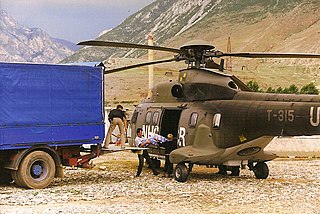 W
WTask Force ALBA was the name of a humanitarian operation of the Swiss Air Force in Albania under a UNHCR-mission during 1999. The goals of the operation were to restore living conditions, provide humanitarian aid, and prevent the outbreak of civil war. It was the first longterm humanitarian mission for the Air Force abroad and the first use of Swiss Air Force helicopters in the edge region of a war zone.
 W
WThe Parachute Reconnaissance Company 17, also known as the Fernspäh-Grenadiers, is Switzerland's principal special forces unit. They are organized as a militia long-range reconnaissance patrol scout type unit, unlike the full-time counterterrorism Army Reconnaissance Detachment 10 unit. Formed in the 1970s, they fall under the operational control of the Swiss Air Force.
 W
WThe Patrouille Suisse is an aerobatic team of the Swiss Air Force. The team flies six Northrop F-5E Tiger II fighter/bomber jets.
 W
W W
WSkyguide is an air navigation service provider which manages and monitors Swiss airspace. The company, which was formerly known as Swisscontrol, changed its name to skyguide in 2001. Skyguide is a joint-stock company under Swiss private law which is responsible, on behalf of the Swiss Confederation, for ensuring the safety of all Swiss airspace and of adjoining airspace areas in Germany, Austria, France and Italy that have been delegated to its control. For Swiss airspace, this duty extends to both civil and military air navigation services.
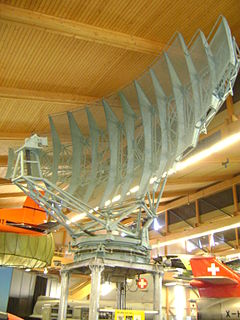 W
WThe SFR Airspace monitoring and management system was the first Airspace monitoring and management system of the Swiss Air Force.
 W
WThe Super Fledermaus, known in Swiss service as the Feuerleitgerät 63, Flt Gt 63, is a pulse-radar fire control system, 111 of these systems were in service with the Swiss Air Force from 1965 to 1977. Under the lead of Contraves, the Super Fledermaus fire control system was jointly developed and produced by ten companies. It replaced the Fire control radar Mark VII in Swiss service, and was in turn replaced by the Skyguard system.
 W
WTAFLIR is the abbreviation for the "Tactical Flight Radar" of the Swiss Air Force. TAFLIR is used to improve the Recognized Air Picture and to support air traffic control and air surveillance of the Swiss Air Force.
 W
WThe Target allocation radar TPS-1E is an omnidirectional pulse radar device. It was used from 1958 until 1989 by the Swiss Air Force. It was also used by German army (Heer) air defence reconnaissance platoons up until the early 1990s.